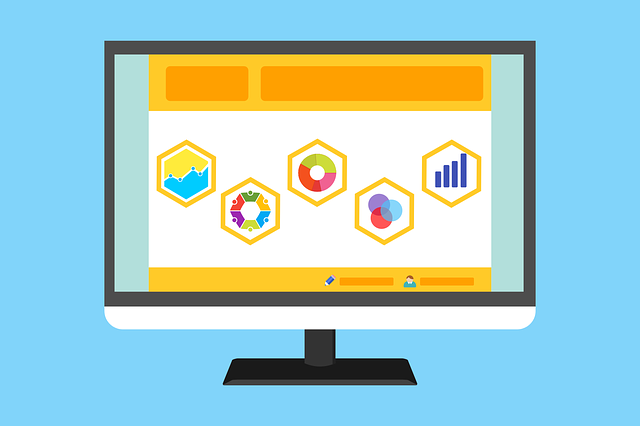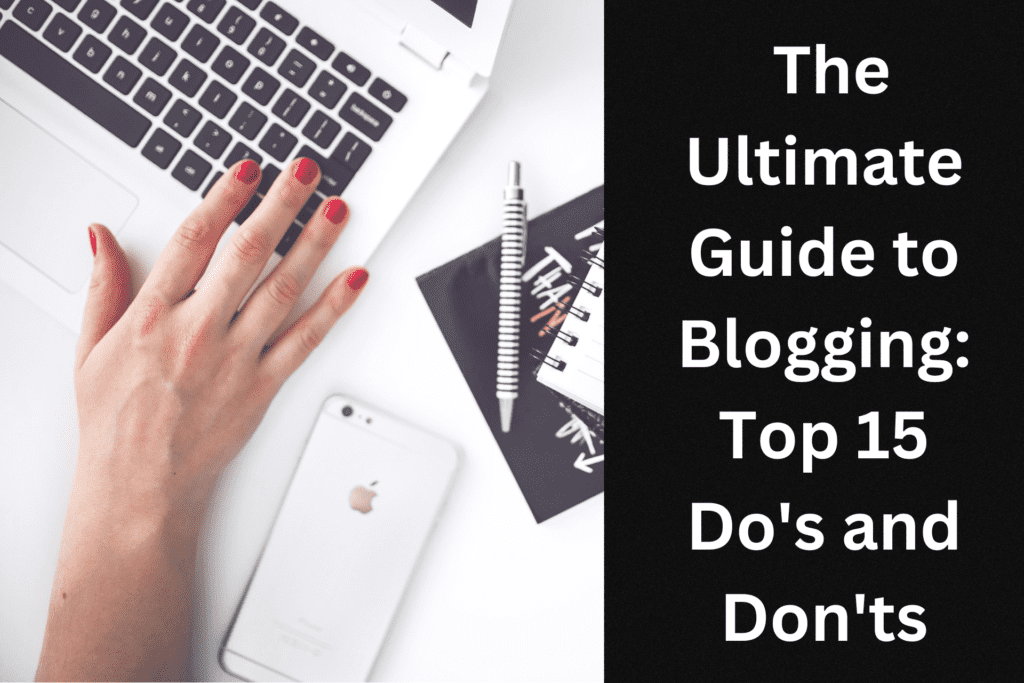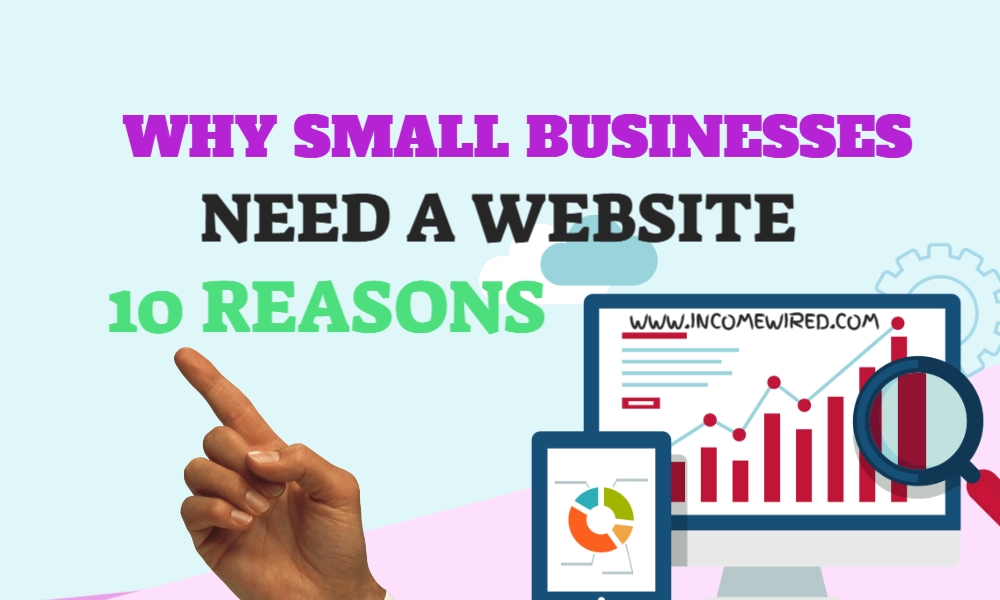we help service-based business owners, freelancers, and aspiring businesses with our content & services & When readers purchase services discussed on our site, we often earn affiliate commissions that support our work. Find out more about Income Wired
Blogging has been around since the early days of the internet, but its relevance has only grown with time. With over 600 million blogs in existence today, blogging has become one of the most effective ways to reach and engage with your target audience. But why is blogging so important, you ask? Well, for starters, it allows you to create a platform where you can share your thoughts, ideas, and experiences with the world. Whether you’re an aspiring writer, entrepreneur, or just someone with a passion for a particular topic, blogging gives you the opportunity to showcase your expertise and establish yourself as a thought leader in your field.
Not only that, but blogging can also be a powerful tool for building your brand and driving traffic to your website. By creating valuable and informative content, you can attract and retain readers who will eventually become your loyal customers and advocates.
But let’s be real, starting a blog can be overwhelming. There are so many things to consider, from choosing a niche and developing a content strategy to promoting your blog and engaging with your audience. With so much to do, it’s easy to get lost in the details and lose sight of why you started blogging in the first place.
That’s why in this blog post, we’re going to break down the dos and don’ts of starting a blog. We’ll show you what to focus on and what to avoid so you can start your blogging journey on the right foot. So, whether you’re a seasoned blogger looking to improve your skills or a newbie just starting out, this post is for you. Get ready to take notes and let’s dive into the world of blogging!
Do’s
Now that we’ve established the importance of blogging, it’s time to dive into the dos of starting a blog. These are the key steps you need to take to ensure that your blog stands out in a sea of millions of blogs. So without further ado, let’s get started.
A. Choose a Niche
When it comes to blogging, choosing a niche is absolutely critical. This is because if your content is too broad or unfocused, it can be difficult to attract a loyal audience. Instead, you should focus on a specific topic or niche that you’re passionate about and that you have expertise. For example, if you’re passionate about fashion, you might choose to focus specifically on sustainable fashion or vintage fashion. By choosing a niche, you’ll be able to develop a clear voice and point of view, which will help you stand out from the competition. Don’t forget to check out our detailed article on the most profitable niches.


B. Research Your Niche
Once you’ve chosen a niche, it’s important to conduct thorough research in order to truly understand your topic. This includes reading other blogs in your niche, attending conferences or events, and following industry leaders on social media. By doing this, you’ll be able to keep up-to-date with the latest trends and developments in your niche, which will help you create more valuable and relevant content for your audience. Additionally, by engaging with other bloggers in your niche, you can build valuable relationships and network within your industry.
C. Define Your Target Audience
In order to create engaging and relevant content, it’s important to have a clear understanding of your target audience. This means identifying who your ideal reader is, what their needs and interests are, and what kind of content they’re looking for. By creating content that’s specifically tailored to your target audience, you’ll be able to attract more readers and build a loyal following. You can use tools like Google Analytics or social media insights to help you understand your audience better.


D. Develop a Content Strategy
In order to create high-quality content on a consistent basis, it’s important to have a content strategy in place. This means creating an editorial calendar that outlines the topics you’ll cover, the frequency of your posts, and the formats you’ll use (e.g. blog posts, videos, podcasts, etc.). By developing a content strategy, you’ll be able to stay organized and consistent, which is key to building a loyal readership. Additionally, by planning your content in advance, you’ll be able to ensure that your content is relevant and timely.
E. Create Engaging Content
Ultimately, the success of your blog will depend on the quality of your content. In order to engage your audience and keep them coming back for more, you need to create content that’s valuable, informative, and entertaining. One of the keys to creating engaging content is to focus on storytelling. This means using examples, anecdotes, and personal experiences to illustrate your points and make your content more relatable. Additionally, it’s important to use visuals like images and videos to break up your text and make your content more visually appealing.
Another important aspect of creating engaging content is to use a conversational tone. This means writing in a way that’s friendly, approachable, and easy to understand. By doing this, you’ll be able to build a connection with your audience and make them feel like they’re having a conversation with a friend.
F. Promote Your Blog
One of the biggest mistakes that bloggers make is assuming that if they just create great content, readers will magically find their blog. In reality, however, promoting your blog is just as important as creating great content. One effective way to promote your blog is to leverage social media. By creating accounts on platforms like Twitter, Facebook, and Instagram, you can share your content with a wider audience and build your brand. Be sure to use relevant hashtags and engage with your followers to build a community around your blog.
Another effective way to promote your blog is to guest post on other blogs in your niche. By doing this, you can tap into an existing audience and introduce yourself to new readers. Additionally, you can include a link back to your own blog, which can drive traffic and improve your SEO.
G. Build an Email List


Building an email list is a critical component of any successful blogging strategy. By collecting email addresses from your readers, you can stay in touch with them and keep them engaged with your content over time. To build an email list, it’s important to offer something of value in exchange for a reader’s email address. This could be a free e-book, a webinar, or even just a regular newsletter with exclusive content.
Once you’ve collected email addresses, be sure to send regular updates to your subscribers. This can include new blog posts, promotions, and other relevant information. By staying in touch with your subscribers, you’ll be able to build a loyal following and keep your blog top-of-mind.
H. Engage with Your Audience
Engaging with your audience is another critical component of a successful blogging strategy. By responding to comments, emails, and social media messages, you can build a community around your blog and create a sense of connection with your readers. To engage with your audience effectively, it’s important to be authentic and genuine. This means taking the time to respond to each comment individually and being transparent about your own experiences and opinions.
Another effective way to engage with your audience is to ask for feedback. By asking your readers for their thoughts and opinions, you can build a stronger relationship with them and get valuable insights into what they’re looking for from your blog.
I. Stay Consistent
Finally, it’s important to stay consistent with your blogging efforts. This means posting regularly, sticking to a consistent schedule, and maintaining a high level of quality in your content. One effective way to stay consistent is to create an editorial calendar. This means planning out your blog posts in advance and setting deadlines for yourself. By doing this, you’ll be able to ensure that you’re always on track and that you’re providing your readers with a steady stream of high-quality content.
Another important aspect of staying consistent is to prioritize your blog. This means making time for it in your schedule and treating it like a real job. By doing this, you’ll be able to stay motivated and focused, and you’ll be more likely to achieve your blogging goals.
Don’ts
Now that we’ve covered the dos of starting a blog, it’s important to also talk about the don’ts. These are common mistakes that many new bloggers make, and avoiding them will help you create a successful and sustainable blog. So let’s take a closer look at the don’ts of starting a blog.
A. Don’t Be Inconsistent
One of the biggest mistakes new bloggers make is being inconsistent with their content. Whether it’s publishing irregularly or going long periods without posting at all, inconsistency can turn off your readers and damage your reputation. To avoid this, create a content calendar and stick to it. Set a schedule for when you’ll publish new content, and make sure to stick to it. This will help you build trust with your readers and establish your blog as a reliable source of information.
B. Don’t Copy Content


Copying content from other sources is a big no-no in the blogging world. Not only is it unethical, but it can also damage your SEO and reputation. Plagiarism is illegal and can lead to serious consequences, such as legal action or being banned from search engines. Instead, focus on creating original and valuable content that your readers will appreciate.
C. Don’t Over-Optimize for SEO
While it’s important to optimize your content for search engines, it’s also important not to overdo it. Over-optimizing can lead to penalties from search engines and damage your reputation. Avoid keyword stuffing, using irrelevant meta tags, and creating low-quality content just for the sake of ranking higher in search results. Instead, focus on creating high-quality content that naturally incorporates relevant keywords and provides value to your readers.
D. Don’t Ignore Your Audience
First things first, your audience is the backbone of your blog. Without them, your blog would just be an empty space on the internet. So, it’s important to always keep your audience in mind when creating content. One of the best ways to understand your audience is by engaging with them. Respond to their comments and messages, ask for their feedback, and listen to their suggestions. By doing this, you’ll be able to create content that resonates with them and keeps them coming back for more.
Another thing to keep in mind is that your audience is not static. As your blog grows, your audience will change and evolve. So, make sure to keep up with the latest trends and changes in your niche, and adjust your content accordingly.
E. Don’t Forget to Promote Your Blog


Creating great content is only half the battle. The other half is promoting it. Without proper promotion, your blog may never reach its full potential. There are many ways to promote your blogs, such as social media, email marketing, guest posting, and more. The key is to find what works best for your blog and your audience.
Social media is a great place to start. Choose the platforms that your audience uses the most and create engaging content that they will want to share with their own followers. Email marketing is another effective way to promote your blog. Create a list of subscribers and send them regular newsletters with your latest content. Guest posting is also a great way to reach a wider audience. Look for other blogs in your niche and offer to write a guest post for them. This will give you exposure to a new audience and also help you build relationships with other bloggers in your niche.
F. Don’t Give Up Too Soon
Finally, blogging is a marathon, not a sprint. It takes time and effort to build a successful blog, so don’t give up too soon. Many bloggers become discouraged when they don’t see immediate results. But, it’s important to remember that building a successful blog takes time. Keep creating great content, promoting your blog, and engaging with your audience. Over time, your hard work will pay off. It’s also important to be patient with yourself. Blogging can be overwhelming at times, but it’s important to take breaks and practice self-care. Burnout can lead to giving up too soon, so make sure to prioritize your mental health.
To Sum It All Up,
Congratulations, you’ve made it to the end of this blog post on the do’s and don’ts of blogging! By now, you should have a solid understanding of what it takes to create and maintain a successful blog. But before you go, let’s recap the main points and leave you with some final thoughts.
As we discussed, the do’s of blogging include defining your niche, creating quality content, building a strong online presence, and engaging with your audience. By following these tips, you’ll be able to attract and retain loyal readers, establish yourself as an authority in your niche, and ultimately, achieve your blogging goals.
On the other hand, the don’ts of blogging include plagiarism, neglecting promotion, and giving up too soon. These mistakes can not only harm your blog’s success, but they can also damage your reputation as a blogger. So, it’s important to avoid them at all costs.
Now, you might be thinking, “Okay, I have all this information, but where do I start?” Well, the first step is to take action. Don’t just read about these tips and forget about them. Implement them in your own blogging journey and see what works for you. Remember, blogging is a learning process, and it takes time and effort to see results. In addition, don’t be afraid to seek out help and resources. There are many online communities and courses that can help you grow your blog and learn from other bloggers. And of course, don’t forget to have fun! Blogging is a creative outlet, and it should be enjoyable and fulfilling for you.



